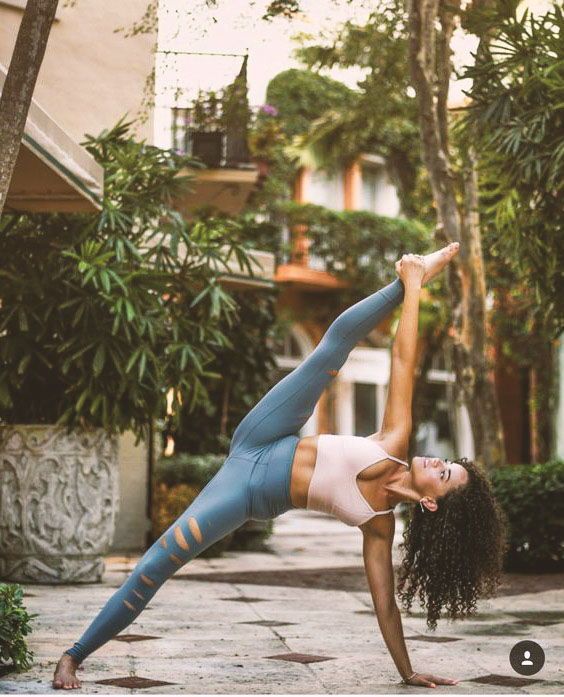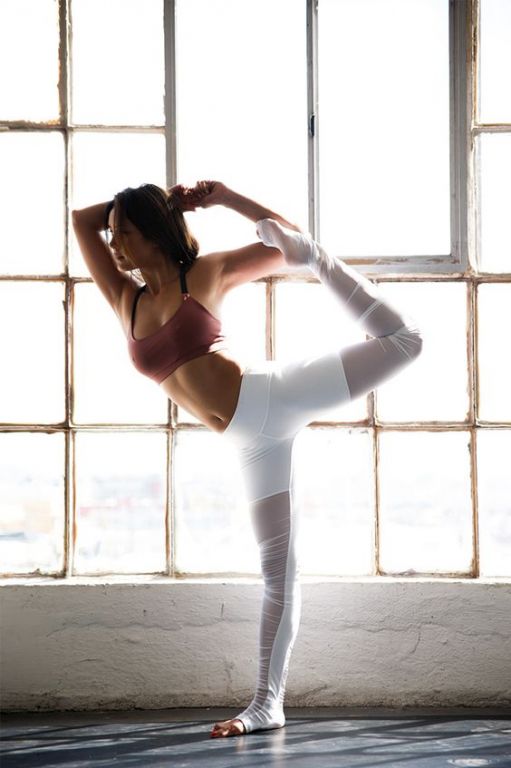Types Of Yoga, Which One Is Best For You?

There are two types of people in the world - those who train and those who do not exercise.
If you fall into the second category, then God will help you! As you get older, you have a number of problems.
But if you work out, you'll find some food for thought here. The years of training, coupled with a good, clean diet, will work in your favor. But your body needs more and therefore you have to embrace yoga. Yoga is not just a workout; It is a way of life. It connects the body, mind and soul with the universal consciousness.
Although yoga involves twists and turns, stretches and bends as well as a complex and intense breathing routine, these are just the superficial aspects of this beautiful expression of life. It conveys discipline and grace and balances our energies and emotions.
Sadhguru Jaggi Vasudev of Isha Yoga says, "The science of yoga is much more than just a curvature of the body. It is the ultimate tool to enhance the human abilities and functions at the highest level of mind and body. "Yoga, take a look at the different types of yoga routines and what you should expect in the classroom. Yoga is so versatile - there is something for everyone.
1. Hatha Yoga
Hatha is a Sanskrit word that means power. It usually involves the physical aspects of the practice. It is the mother of all yoga exercises. All other subgroups fall into this category.
The Hatha Yoga class is usually a slow course and does not follow a river. This course is perfect for beginners as it gently introduces you to yoga. If you are a seasoned yogi, you can relax in this class. This course is all about basics. It teaches you how to breathe; It also teaches you postures, meditation and relaxation techniques. If you're new to yoga, you should probably sign up for a Hatha Yoga class first.
2. Vinyasa Flow
In this type of yoga, you need to coordinate your breathing with the movement, and it's important to create a flow of postures with smooth transitions from one to the next. Vinyasa literally means connection. You need to connect your movements with an inhale or exhale. You can use this style through the Surya Namaskar, the balancing poses, the backbends or the sitting poses. The training ends with the Savasana. This class is based on the creativity of the teacher and has no fixed and fast structure. Sometimes spirituality is included in these courses with a dash of meditation and singing. Other instructors believe that it stays athletic. You can choose what interests you when you enroll in this class.
Depending on the level, this category can be slow and gentle or fast and intense. As a beginner, you should first look for a slower class and then switch to a faster class.
3. Iyengar Yoga
This type of yoga focuses on the alignment. The class does not have such a flow as the Vinyasa style. Every pose in Iyengar is intense, and you have to hold it for a long time and stretch while breathing. This yoga style works with many props such as straps, blocks and blankets.
For those who like to go into detail and feel and learn the pose intensively, this is your choice! This class is also suitable for people with injuries and chronic problems. This style can meet all restrictions and makes you stable, flexible and strong.
4. Bikram Yoga
This yoga style is hot-hot-hot! If you try, you will surely get rid of it. Bikram yoga is usually done in a 40 degree Celsius heated room with 40% humidity. The idea is to sweat it out. It comes from the vinyasa style. In a Bikram yoga class, you practice the asana essentially in tune with your breath.
The founder, Bikram Choudhury, formulated a sequence of 26 postures, believing that every part of the body, be it muscles, veins, ligaments or organs, was systematically challenged.
5. Ashtanga Yoga
This yoga style is popularly called power yoga and is considered a contemporary version of classic yoga. Initiated by K. Pattabhi Jois, this form of yoga also combines movement with breath, but the movements are more defined. With every asana one moves forward gently and every action is practiced with a reversal.
You start with the Primary series, and once you've mastered it, you'll move on to the next level. It takes years to get on, but the focus is always on postures and not on progress.
This style of yoga is extremely upbeat. It focuses on upliftment and is the most spiritual of all the yoga techniques. It is epitomized by “the celebration of the heart.” It is a relatively new form of yoga, started in 1997 by John Friend. It focuses on seeking the light within yourself.
If you are new to yoga and are up for some real soul-searching, this is something you must try. This style uses breathing and alignment, and to get them right, you will also use a whole lot of props.
6. Jivamukti Yoga
This form of yoga is much more than an exercise - it is a way of life. It includes ethical, spiritual and physical aspects. In this yoga style, which was formulated by Sharon Gannon and David Life, it is also about respecting the environment. So you have to be kind to animals and become vegan. The five most important aspects of this method are Shastra (scripture), Bhakti (surrender), Ahimsa (not damaging), Nada (music) and Dhyana (meditation).
In a typical course, you begin to set an intention, followed by singing and then breathing consciousness. It involves vinyasa movements and ends with relaxation and meditation. This type of yoga is a complete package that includes spirituality with physical benefits. If this sounds interesting, you have to try it!
7. Kundalini Yoga
This form of yoga is rooted in the chakras. It focuses on the core work and the breath, d. H. Pranayama. It aims to open the mind and sensitize you to your mind and body.
This is one of the spiritual yoga styles that also involves a lot of meditation. Singing, meditation, mudras and breathing form the core of this yoga style. This class is usually physically exhausting. It's also a mental challenge. But once you get into the groove, Kundalini Yoga will surely change your life.
8. Anusara Yoga
This yoga style is extremely optimistic. It focuses on the uplift and is the most spiritual of all yoga techniques. It is the epitome of the "celebration of the heart". It is a relatively new form of yoga that was launched in 1997 by John Friend. It focuses on finding the light in yourself.
If you're new to yoga and feel like searching for the soul, this is something you need to try. This style uses breathing and alignment, and to get it right, you will also use a whole range of props.
9. Yin Yoga
This type of yoga is slow. You are expected to hold each pose for at least five minutes. It is said that doing so will stress the connective tissue in the body, and this helps to increase blood circulation and flexibility. This type of yoga is designed to improve the Qi (life energy) in the body. In general, you practice this style in a heated room to stretch and make your muscles more elastic. Interestingly, this form of yoga was initiated by a Taoist yoga teacher and martial arts expert, Paulie Zink.
Yoga of this kind is for those who love to challenge their minds. You become more patient and concentrate thoughtfully on your breathing. This yoga style is incredibly relaxing.
We hope the overview of the different types of yoga has inspired you enough to choose one. Choosing the best form is not only fun, it also brings out the best in you physically and mentally. So, just accept yoga in your life, not just as a workout, but as a way of life!




No comments: